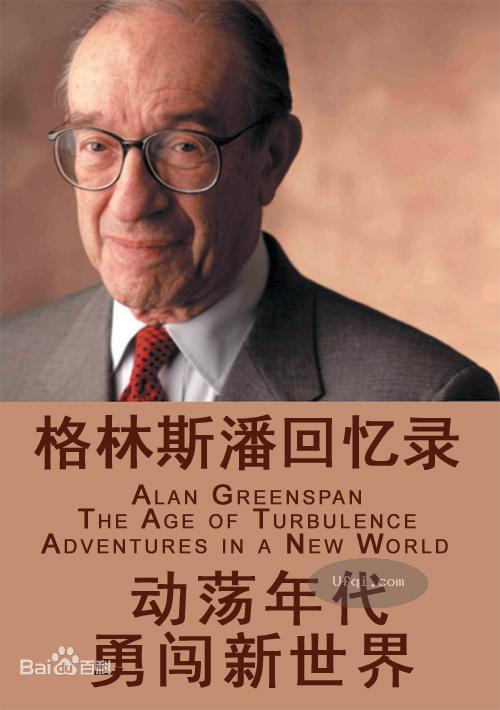


2023-05-16 , 8785 , 104 , 163
美联储主席艾伦格林斯潘回忆录--动荡年代:勇闯新世界-the age of turbulence-42
A DEMOCRAT'S AGENDA
When the $40 billion proposal was rolled out, Newt Gingrich asked me if I would call Rush Limbaugh and explain why it was in America's best interest to intervene.
"I don't know Rush Limbaugh/' I said.
"Do you really think calling him will make a difference?"
"He'll listen to you/' Gingrich told me. The ultracombative radio host was a force among conservatives.
Some of the freshman congressmen had actually taken to calling themselves the Dittohead Caucus, using the favorite nickname of fans of his show. Needless to say Limbaugh was having a field day trashing the thought of giving Mexico a hand. I was still dubious, but it impressed me that the new House Speaker was willing to support a Democratic president on a clearly unpopular issue. So reluctantly I picked up the phone.
Limbaugh seemed even less comfortable than I. He listened politely as I laid out my arguments, and thanked me for taking the time. This surprised me—I'd expected Rush Limbaugh to be more confrontational.
The situation couldn't wait for Congress to come around. In late January with Mexico teetering on the brink, the administration took matters into its own hands. Bob Rubin turned to a solution that had been proposed and dismissed early on: tapping an emergency Treasury fund that had been created under FDR to protect the value of the dollar. Rubin felt great trepidation about risking tens of billions of taxpayers' dollars. And even though the congressional leaders promised to acquiesce, there was the risk of appearing to circumvent the will of the people: a major poll showed voters opposed helping Mexico by a stunning margin of 79 percent to 18 percent.
I pitched in to help work out the details of the plan. Rubin and Summers presented it to President Clinton on the night of January 31. The surprise was still in Bob's voice when he phoned afterward to report the result.
Clinton had said simply, "Look, this is something we have to do," Rubin told me, adding, "He didn't hesitate at all."
That decision broke the logjam. The International Monetary Fund and other international bodies more than matched some $20 billion of guarantees from the Treasury to offer Mexico a package totaling, with all its components,
$50 billion, mostly in the form of short-term loans. These weren't giveaways, as opponents had claimed; in fact, the terms were so stiff that Mexico ended up using only a fraction of the credit. The minute that confidence in the peso was restored, it paid the money back—the United States actually profited $500 million on the deal.
159
It was a sweet victory for the new treasury secretary and his team. And the experience formed a lasting bond between Rubin; Summers, and me.
In the countless hours we spent analyzing the issues, brainstorming and testing
ideas, meeting with our foreign counterparts, and testifying before Congress,
we became economic foxhole buddies.
I felt a mutual trust with Rubin that only deepened as time passed. It would never enter my mind that he would do something contrary to what he said he would do without informing me in advance. I hope it was the same way with him.
Even though we came from opposing parties, there was a sense that we were



working for the same firm. We agreed on many basic issues and neither of us liked confrontation for confrontation's sake, which made it easy to communicate and spark off each other's ideas.
Summers, of course, had started as the economics wunderkind.The son of Ph.D. economists and the nephew of two Nobel laureates in economics, he was one of the youngest professors ever to get tenure at Harvard.
Before joining the administration, he'd been chief economist of the World Bank.
He was an expert in public finance, development economics, and other fields. What I liked best was that he was a technician and a conceptualizer like me, with a passion for grounding theory in empirical fact. He was also steeped in economic history, which he used as a reality check.
He worried, for example, that the president was getting carried away with the promise of information technology—as though the United States had never gone
through periods of rapid technological progress before.
"Too yippity about productivity" was how Larry once described Clinton's techno-enthusiasm.
I disagreed, and we had debates about the Internet's potential, with Bob taking it all in. Larry could be shrewd too: it was his idea to put such a high interest rate on the Mexico loans that the Mexicans felt compelled to pay us back early.
Rubin and Summers and I met confidentially over breakfast each week for the next four and a half years, and we would phone and drop by one another's offices frequently in between. (Larry and I continued the practice after Bob returned to Wall Street in mid-1999 and Larry became treasury secretary.) We'd gather at 8:30 a.m. in Bob's office or mine, have breakfast brought in, and then sit for an hour or two, pooling information, crunching numbers, strategizing, and brewing ideas.
160
A DEMOCRAT'S AGENDA
I always came out of these breakfasts smarter than when I arrived.
They were the best forum I could imagine for puzzling out the so-called New Economy. The dual forces of information technology and globalization were beginning to take hold; and as President Clinton later put it; "the rulebooks were out of date." Democrats joyfully labeled the constellation of economic policies "Rubinomics." Looking back in 2003, a New York Times reviewer of Bob's memoir called Rubinomics "the essence of the Clinton presidency." He defined it as "soaring prices for stocks, real estate, and other assets, low inflation, declining unemployment, increasing productivity,
a strong dollar, low tariffs, the willingness to serve as global crisis manager, and most of all, a huge projected federal budget surplus." I wish I could say that it was all the result of conscious, effective policy coming out of our weekly breakfasts. Some of it surely was. But mostly it reflected the onset of a new phase of globalization and the economic fallout from the demise of the Soviet Union, issues I will address in later chapters.
Isaw President Clinton only infrequently. Because Bob and I worked together so well, there was rarely any need for me to attend an economic policy meeting in the Oval Office except in moments of crisis—such as when a budget standoff between Clinton and Congress forced a shutdown of the government in 1995.
I did eventually hear that the president had been sore at me and the Fed for much of 1994, while we were hiking interest rates. "I thought the economy had not picked up enough to warrant it," he explained to me years later. But he never challenged the Fed in public. And by mid-1995, Clinton and I had settled into an easy, impromptu relationship. At a White House dinner or reception, he'd pull me aside to see what was on my mind or to try out an idea. I didn't share his baby-boom upbringing or his love of rock and roll.



UfqiLong
Probably he found me dry—not the kind of buddy he liked to smoke cigars and watch football with. But we both read books and were curious and thoughtful about the world, and we got along. Clinton publicly called us the economic odd couple.
161
I never ceased to be surprised by his fascination with economic detail:
the effect of Canadian lumber on housing prices and inflation,
the trend toward just-in-time manufacturing.
He had an eye for the big picture too, like the historic connection between income inequality and economic change.
He believed dot-com millionaires were an inevitable by-product of progress. "Whenever you shift to a new economic paradigm, there's more inequality," he'd say. "There was more when we moved from farm to factory.
Vast fortunes were made by those who financed the Industrial Revolution and those who built the railroads." Now we were shifting into the digital age, so we had dot-com millionaires. Change was a good thing, Clinton said—but he wanted ways to get more of that new wealth into the hands of the middle class.
Politics being what they are, I never thought Clinton would reappoint me as chairman when my term ended in March 1996. He was a Democrat and no doubt he would want one of his own. But by the end of 1995, my prospects had changed. American business was doing exceptionally well— profits at large companies were up 18 percent and the stock market had had its best growth in twenty years. Fiscal and monetary policy were both working, with the 1996 deficit projected to shrink to less than $110 billion, and inflation still below 3 percent. GDP growth was starting to revive without a recession.
The relationship between the Fed and the Treasury had never been better. As New Year's came and went, the press began speculating that the president might ask me to stay. In January, Bob Rubin and I went to a G7 meeting in Paris. During a pause in the proceedings, we wandered off to the side. I could tell that Bob had something on his mind.
I can still picture the scene: we were standing in front of a floor-to-ceiling plate-glass window with a panoramic view of the city.
"You'll be getting a call from the president when we get back to Washington,"
he said.
He didn't come right out and tell me, but I knew from his body language that the news must be good.
President Clinton set a little challenge for me and for the two Fed officials he appointed at the same time: Alice Rivlin, who was to be Fed vice chairman, and Laurence Meyer, a highly regarded economics forecaster,
who would become a Fed governor.
"There is now a debate, a serious debate in this country, about whether there is a maximum growth rate we can have over any period of years without inflation/'
the president told reporters.
162
A DEMOCRAT'S AGENDA
It wasn't hard to read between the lines. With the economy entering its
sixth year of expansion, and with the soft landing looking real, he was asking
for faster growth, higher wages, and new jobs.
He wanted to see what this rocket could do.
163
(未完待续, To be contd)



🔗 连载目录
🤖 智能推荐



